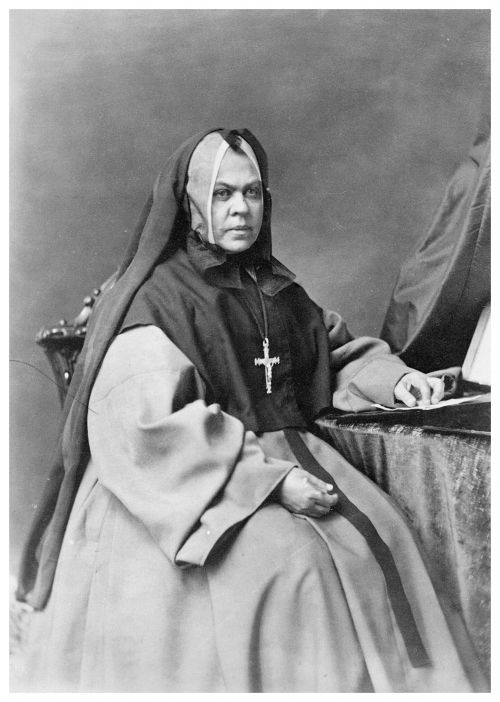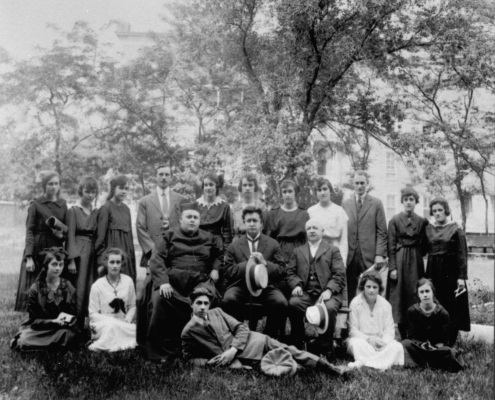The life of Élisabeth Bruyère is intimately linked to the beginnings and development of the Diocese of Ottawa. This woman also ranks among the most illustrious female figures in French-Canadian Catholicism. Élisabeth Bruyère comes to the capital to found the Grey Nuns of the Cross in Ottawa, thereby replicating the educational and charitable mission of the Grey Nuns of Montréal. She leaves a remarkable legacy of charismatic and evangelic charity, which continues to drive the development and influence of this religious community today.
Born in 1818 near Montréal, Élisabeth Bruyère joins the Grey Nuns of Montréal in 1840. Young Élisabeth distinguishes herself quickly by her devotion to work, her spirit of initiative, and her fervent piety – so much so that at just 27 years of age, her superiors decide to place her at the head of a religious mission in Bytown to found a general hospital. In the middle of the 19th century, Bytown is still a small, isolated, rather disreputable village. Much remains to be done there, as the Catholics have neither schools nor hospitals nor organized assistance for those in need.
The Grey Nuns begin to set up multiple charitable works: to found a congregation; to open the first bilingual school for girls on St. Patrick Street; to establish a boarding school, commonly known as the Rideau Street Convent; to construct a general hospital (which becomes the Ottawa General Hospital); to open the Saint-Joseph Orphenage; to visit the poor and the sick in their homes; to support migrants. Like the Oblates with whom they share “the mysticism of pioneers,”1 they will take up a lot of space.
During the three decades of Mother Bruyère’s episcopate, the Grey Nuns of the Cross gain complete independence from the mother house in Montréal. The small congregation evolves rapidly, at the same rate as the city where it is located, and grows into a relatively large community. In 1876, the year of Mother Bruyère’s death, Ottawa’s Grey Nuns of the Cross bring together a total of 189 converse nuns, 149 lay sisters, 40 novices and 24 postulants. In addition to working in Ottawa and Quebec’s Outaouais region, they also expand their presence further into Ontario and Quebec, and even into parts of the United States.
The legacy of the Grey Nuns of the Cross, renamed the Sisters of Charity of Ottawa in 1968, spans generations and continues in the long term. They have educated, in their own language, generations of Ottawa Francophone girls. They also trained their teachers. The Grey Sisters are also responsible for establishing a school of nursing (D’Youville School of Nursing) at the Ottawa General Hospital (1896); founding the Saint-Vincent House (1924), which later becomes Saint-Vincent Hospital; and creating the Saint-Louis Residence (1966) and the Élisabeth Bruyère Health Center (1980), where a regional palliative care unit is eventually established.
1 Émilien Lamirande, Élisabeth Bruyère, 1818-1876 : fondatrice des Sœurs de la Charité d’Ottawa, Montréal, Éditions Bellarmin, 1993, p. 141 (translated from the original).
Portrait of Mother Bruyère, founder of the Grey Nuns of the Cross (1818-1876), 1871. Photo: Williams James Topley.
Source: Library and Archives Canada, Topley Studio fonds [graphic material] (R639-0-5-E), PA-186451.






